- Home
- Things to do
- Landscapes & Nature
- 6 Scenic natural wonders
6 Scenic natural wonders
Mother Nature is a talented architect and filled Scotland with a huge variety of magnificent natural attractions. With hundreds of awe-inspiring natural landmarks, you won't have to travel too far to find beautiful places in Scotland. To help you on your way, we've asked our Facebook fans to share their favourite scenic spots in Scotland. Here’s the list we’ve pulled together based on their recommendations.
- 1
The isle of Skye Highlands
Talisker Bay
Cheyenne Doles says: ‘The Isle of Skye. All the landscape here is beautiful. I couldn’t just pick one specific spot’’.
Yes, Cheyenne, we agree with you! Skye is a truly magical place that has countless unforgettable views to enchant you. Don’t miss the Quiraing, a massive landslip on the northernmost point of the Trotternish ridge – it’s a simply stunning place, defined by cliffs, sweeping hillsides and awesome pinnacles and looks strangely supernatural. Take a walk to the cinematic Old Man of Storr – an impressive and unique rocky crop. This pinnacle proudly stands at around 160 ft (49 m) tall and is surrounded by several slightly smaller pinnacles – a true icon of Skye, that can be seen for miles around. And don’t miss the Fairy Pools – beautiful cascading waterfalls and various pools filled with crystal clear water from the Cullin mountains.
- 2
Luskentyre Beach Isle of Harris
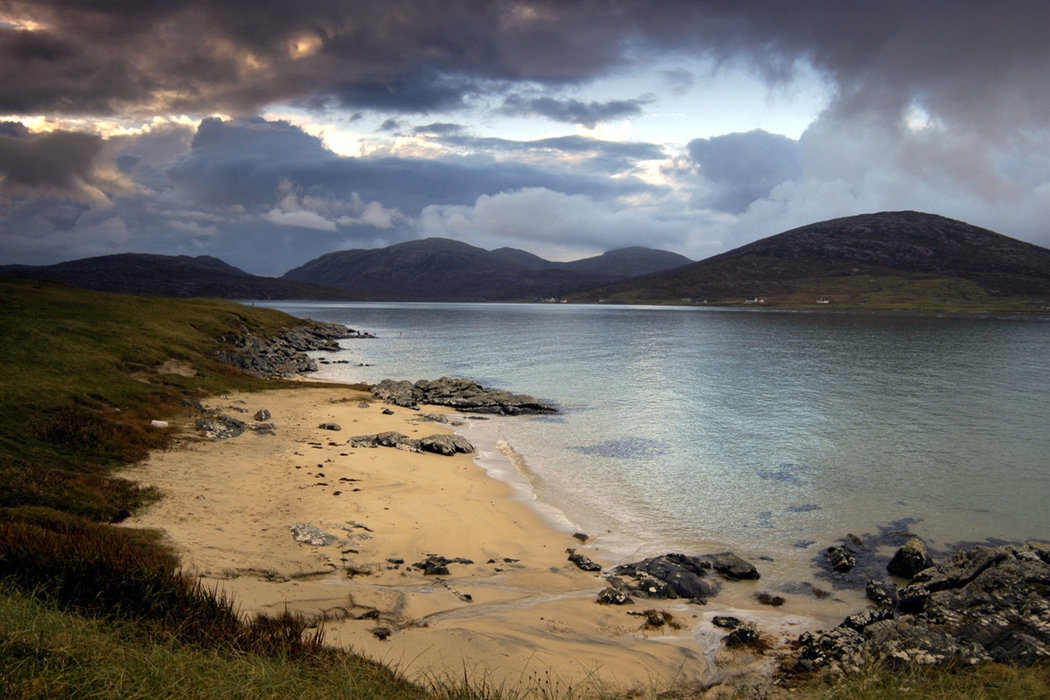
A SMALL BEACH NEAR LOSGAINTIR (LUSKENTYRE), ISLE OF HARRIS, OUTER HEBRIDES.
© VisitScotland / Paul Tomkins, all rights reserved.
Terry Winter recommends exploring the Luskentyre Beach on the Isle of Harris.
Famous for its miles of white sands and the gorgeous green-blue waters, Luskentyre Sands is a little slice of heaven on earth. Submerged at high tide, it becomes part of the Sound of Taransay that looks out to the Isle of Taransay.
Situated on the Isle of Harris in the north-west of Scotland, this perfectly curved crescent of fine shell sand is reminiscent of an exotic beach. Lapped gently by azure water and backed by sand dunes with grass that ripples in the wind, Luskentyre certainly knows how to mesmerise its visitors. The slopes of Ben Luskentyre dropping down into the water and the backdrop of the North Harris hills across the sound only add to its remarkableness.
Should you need more convincing, Luskentyre was named one of Britain’s best beaches while Harris and Lewis islands scooped first place in the Best Island in Europe category in TripAdvisor’s 2014 Travellers’ Choice awards. Coastal scenery really doesn't come any better than this.
- 3
Scott’s View Near Melrose, Scottish Borders

Scott's View, overlooking the valley of the River Tweed and the Eildon Hill (centre), which is reputed to be one of the favourite views of Sir Walter
© Kenny Lam, VisitScotland. All rights reserved.
Lynda Rodgerson’s favourite scenic spot in Scotland is Scott’s View.
Located near Melrose in the Scottish Borders, Scott’s View is a scenic viewpoint that has been popular for centuries. Overlooking the beautiful rolling Eildon Hills to the west, and rolling farmlands and woodlands to the south, it’s little wonder that it’s said to have been one of the favourite places of Sir Walter Scott, the famous Scottish 19thcentury writer, to come, reflect and take inspiration for his work. Add to this the meandering River Tweed immediately below and it only takes one visit to understand what enthralled the poet about this place.
The proximity of the viewpoint to Melrose, St Boswells and Kelso makes it an easy stop if you are based in those towns or just traveling in the area to explore the various abbeys.
- 4
Buachaille Etive Mòr Highlands
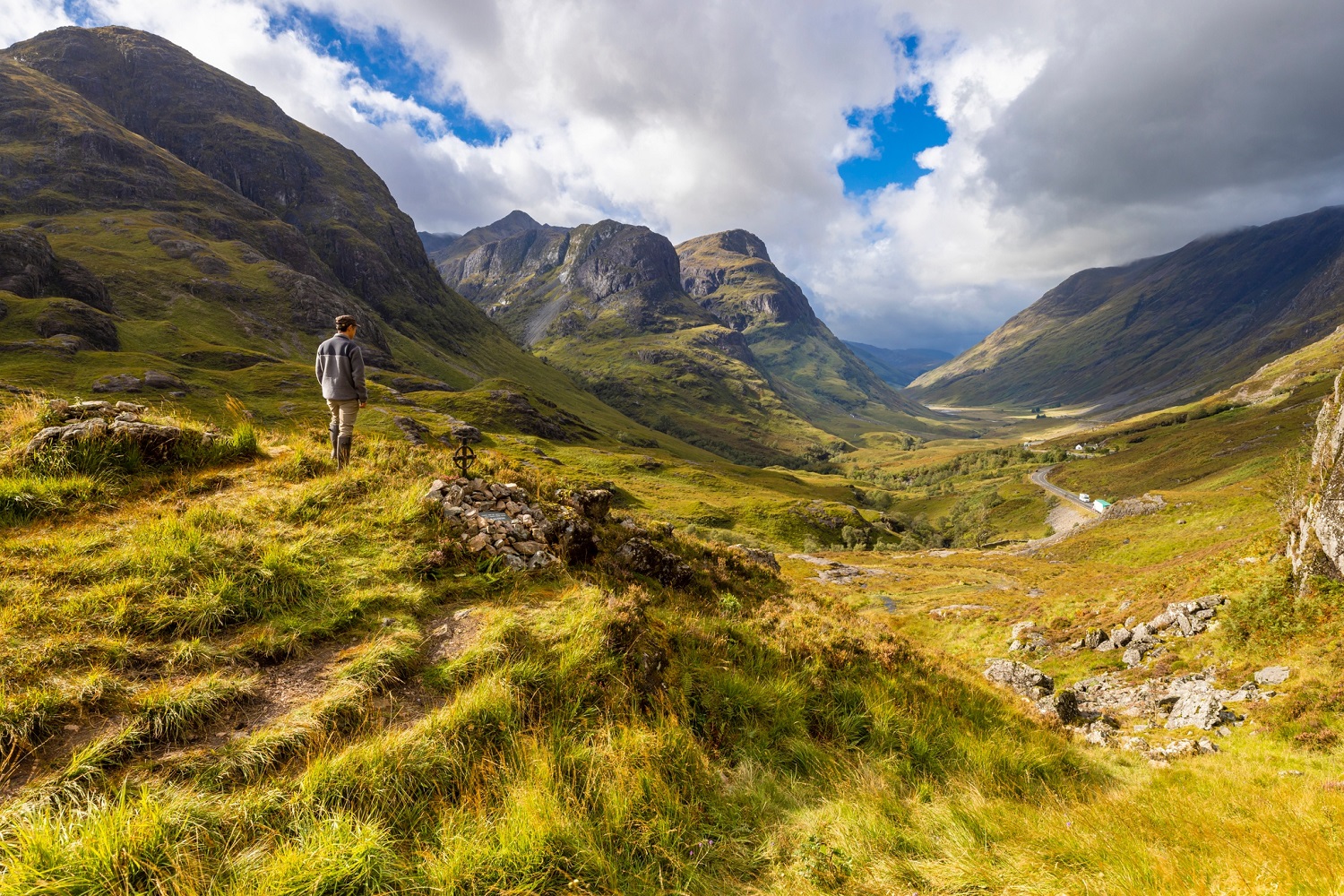
The Pass of Glencoe
© VisitScotland / Kenny Lam
Joe BWollaston says: ‘’My favourite mountain – Buachaille Etive Mòr – photographed of course, but its position lends itself to numerous compositions including the River Etive and River Coupall, and always beautiful whatever the weather’’.
Shaped millions of years ago from some of the oldest sedimentary and volcanic strata in the world, the famous pyramid of Buachaille Etive Mòr guards the entrance to the famous Glen Coe and the nearby beautiful Loch Leven. Together with the Three Sisters, this complex mountain range forms a magical land that looks straight out of a storybook.
This place attracts and stuns visitors from all over the world, and Glen Coe is often cited as one of the top views in the UK. Visit for yourself to see the sheer scale and grandeur of the surrounding landscapes and learn about the area’s turbulent past.
- 5
Portencross Near West Kilbride, Ayrshire
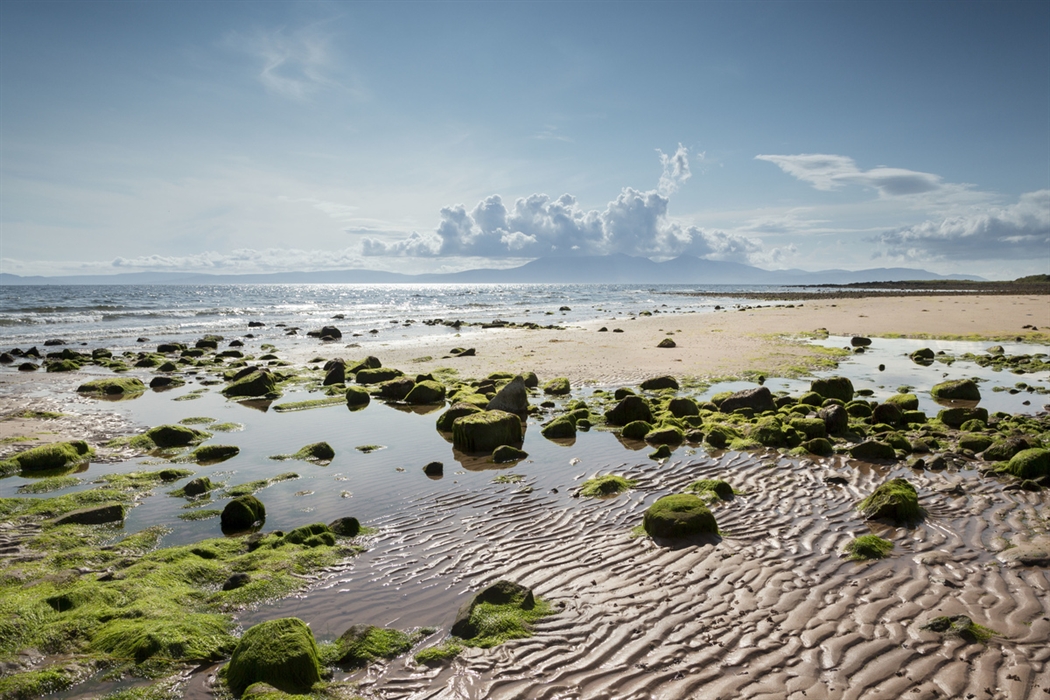
The beach at Portencross Beach, near West Kilbride, North Ayrshire with a view towards the Isle of Arran beyond.
© VisitScotland / Paul Tomkins, all rights reserved.
Gary Chittick says: ‘’Portencross with a view to Arran. Serene but spectacular sunsets and open water views. A good reset for the mind, location with places to walk and wildlife to see.’’
This little hamlet is a magical spot but easy to overlook. Standing at the most westerly point of North Ayrshire, near West Kilbride, Portencross boasts superb coastal views, taking in the island of Great Cumbrae to the north, Little Cumbrae and Bute to the north-west, and the Arran to the west.
As you wander through the picturesque sandy expanse of Portencross Beach the most striking feature is the remains of Portencross Castle. This important ancient monument which dates as far back as the 14th century stands right on the shoreline only a few feet above the high-water mark.
I’st a truly is an impressive site, and the panoramic views of the nearby islands are simply spectacular.
- 6
Stirling Castle Stirling, Loch Lomond, Trossachs & The Forth Valley
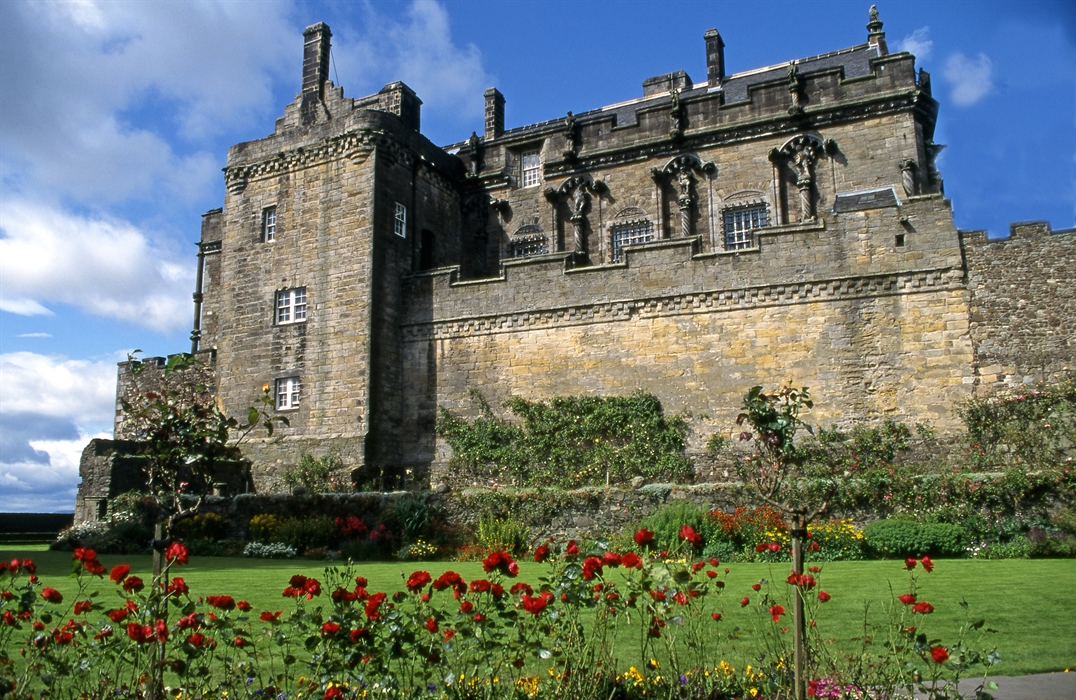
Stirling Castle
Joe B. Wollastone says: ‘’Stirling – especially the castle – due to its incredible position. A great city to visit with a huge amount of fascinating history to see.
Stirling Castle is one of Scotland’s grandest constructions and probably the most instantly recognisable of all Scottish castles. Standing 250 feet (75 m) higher than the surrounding terrain on the flat top of an ancient extinct volcano and commanding excellent views in every direction, it can be spotted from miles away.
This favoured residence of the Stewart kings and queens has been meticulously restored to its original Renaissance glory. Explore the stunning grounds and gardens, the Great Hall, Chapel Royal, the castle exhibition, Regimental Museum, Tapestry Studio and more. You certainly won’t be lost for things to do here. The location, architecture, historical significance and commanding views combine to make Stirling Castle a grand and memorable visit.
Key facilities- Parking
- On Public Transport Route
- Hearing Loop
- Accessible Parking Or Drop-off Point
- Level Access
- Accessible toilets
- Cafe or Restaurant
- 7
The Three Sisters of Glencoe The Highlands
The Three Sisters, Glencoe
© VisitScotland / Kenny Lam
The Sisters, three steeply-sided ridges – Beinn Fhada (Long Hill) on the east, Gearr Aonach (Short Ridge) in the middle and Aonach Dubh (Black Ridge) on the west – were shaped millions of years ago from some of the oldest sedimentary and volcanic strata in the world. To this day, they attract and stun visitors from all over the world. Visit for yourself to see the sheer scale and grandeur of the surrounding landscapes and learn about the area’s turbulent past.
Dominating the valley’s skyline, the Three Sisters – with many ridges and subsidiary peaks – are a true mecca for keen walkers. Together with the famous pyramid of Buachaille Etive Mòr that guards the entrance to the glen and the nearby beautiful Loch Leven, this complex mountain range forms a magical land that looks straight out of a storybook. It’s no wonder Glen Coe is often cited as one of the top views in the UK.
Protect Glen Coe and be a responsible tourist by visiting an alternative destination. Take a look at these similar places: Ben Nevis in Fort William, Schiehallion near Pitlochry, The Cobbler in Arrochar Alps
- 8
Fingal's Cave Isle of Staffa
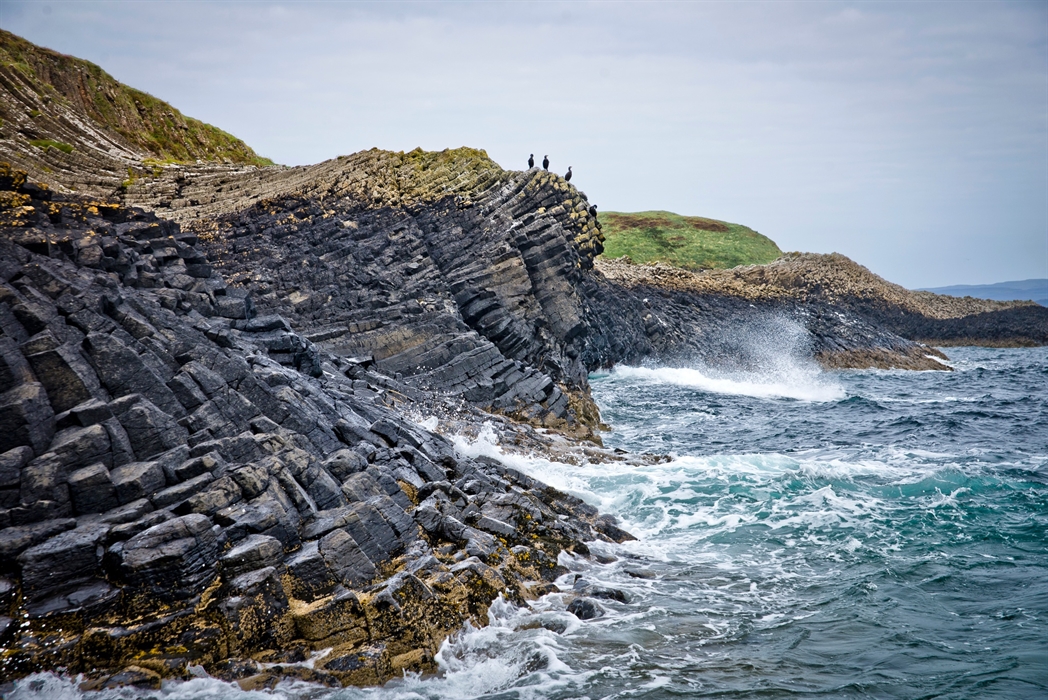
Staffa Island and Fingals Cave.
© VisitScotland / Kenny Lam
Fingal’s Cave on the uninhabited Isle of Staffa in Argyll is perhaps the best known of all the caves in Scotland, and one of the best examples of volcanic basalt columns in the world.
Looming 227 ft (69 m) tall over the ocean, this visually astounding geometric sea cave has been formed completely from hexagonal columns of basalt, shaped in neat six-sided pillars, that make up its interior walls. It was created some 60 million years ago by the very same ancient lava flow that created the Giant’s Causeway in Ireland, which is directly across the sea.
Follow in the footsteps of Queen Victoria and Sir Walter Scott, amongst others, and take a cruise boat to Staffa and the breathtaking Fingal's Cave, where you can enjoy puffin spotting in summer, and listen to the astonishing acoustics of the cave, which inspired Mendelssohn to compose his Hebrides Overture.
Similar places: : Smoo Cave near Durness, Bass Rock in North Berwick, St Kilda in the Outer Hebrides
- 9
Scottish Dark Sky Park Dumfries and Galloway
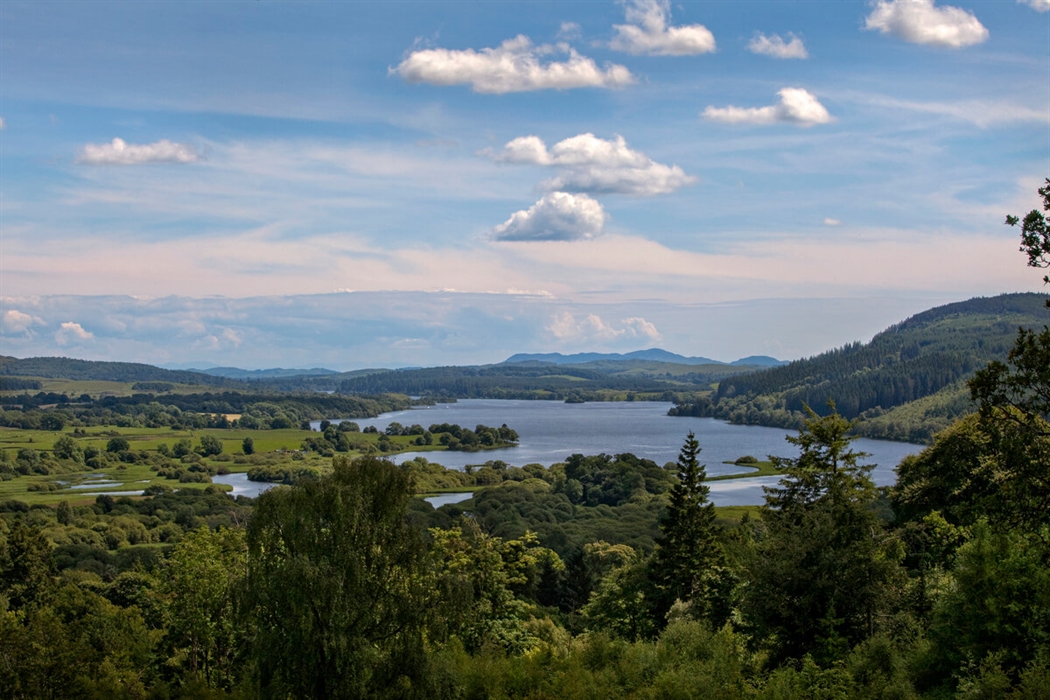
A view over the treetops to Loch Ken in the middle distance, with thickly forested mountains beyond.
© Dumfries & Galloway Council / Mark Geddes, all rights reserved.
Spanning around 75,000 hectares of land, Galloway Forest Park in Dumfries & Galloway is the UK and Europe’s first designated Dark Sky Park, often making it to lists of world’s darkest places offering the best conditions for stargazing. So few people live within the forest park that light pollution is minimal and the nights really are inky black.
Its darkness has a legendary reputation amongst stargazers. The forest park has a Sky Quality Meter scale reading of 21 to 23.6 on a scale of 25, giving it a score of near to total darkness.
Travel to the park in the south west of Scotland, where you can get a glimpse of more than 7,000 stars and planets with the naked eye, and see meteors when they occur. The visibility is often clear enough for the bright band of the Milky Way to be seen arching across the sky. There’s a new show every night because, as we travel round the sun, we’re getting a constantly changing view of the stars.
Similar experiences: Isle of Coll in Argyll, Moffat Dark Sky Town near Dumfries, Northern Lights
- 10
An Lochan Uaine (The Green Loch) The Highlands
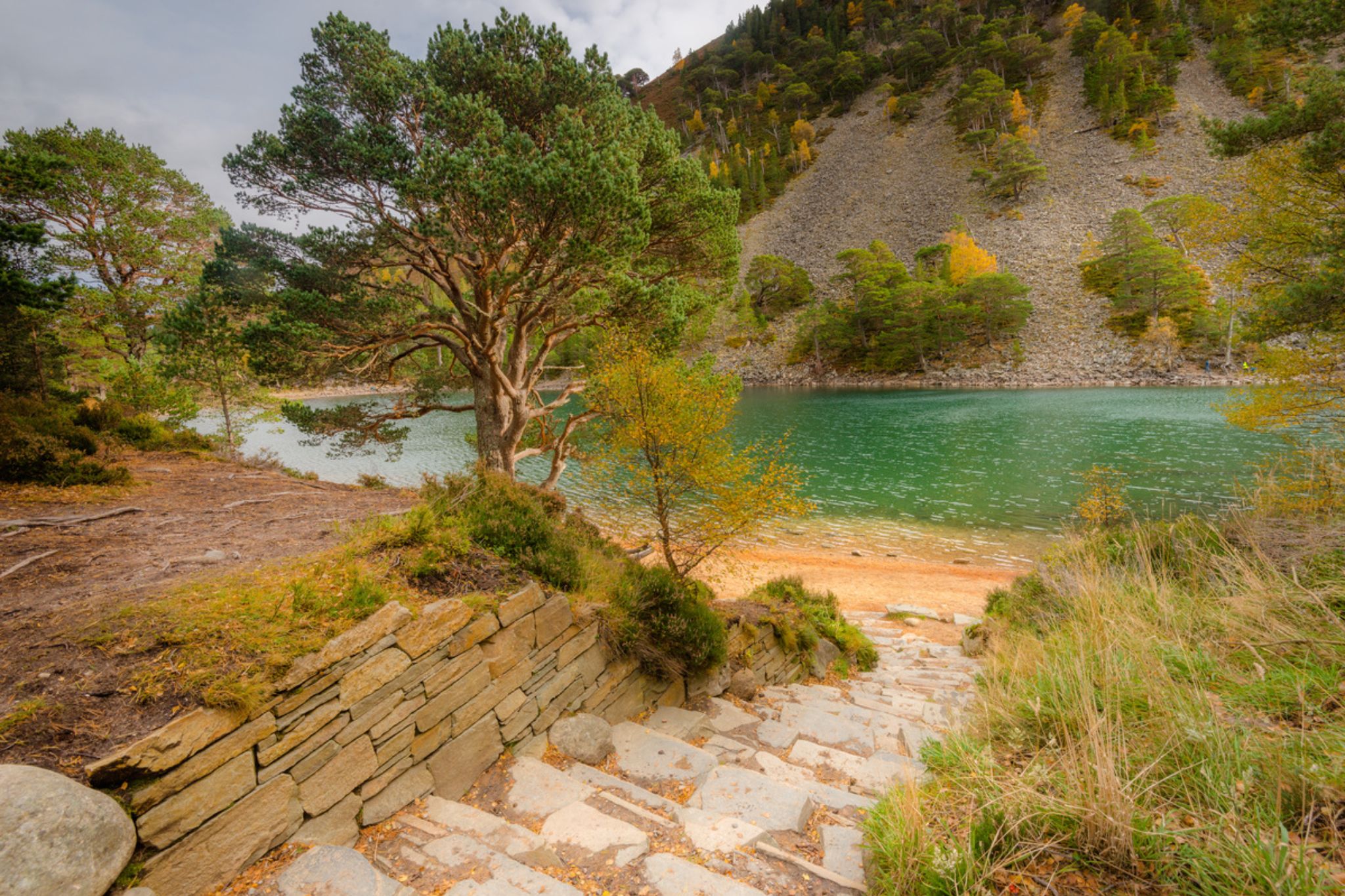
An Lochan Uaine (The Green Loch)
As legend has it, the enchanting An Lochan Uaine (The Green Lochan) in Glenmore Forest Park got its unique emerald hue when Dòmhnall Mòr, the king of the pixies (the local fairies), washed his clothes in its waters. Another explanation for the loch’s green tint could be from algae generated by decomposing wood lying along the loch floor, but we think the fairy story is much more fun!
Either way, the colour of the water is uncanny and makes this a mysterious, magical spot.
Located in the Ryvoan Pass near Aviemore and surrounded by lush forest and steep scree slopes, the lochan makes an accessible and enjoyable walk from Glenmore, and has long been a popular stopping point for walkers in the Cairngorms National Park.
The word uaine (pronounced oo-in-ya) is a Gaelic word used to refer to a bright, vivid green colour.
An Lochan Uaine is a much loved destination, but to protect it you may want to consider visiting a less well known and popular site. Check out these similar places: Loch Coruisk on the Isle of Skye, Loch Lomond in the Loch Lomond & The Trossachs National Park, Loch Ness near Inverness
- 11
Rannoch Moor The Highlands
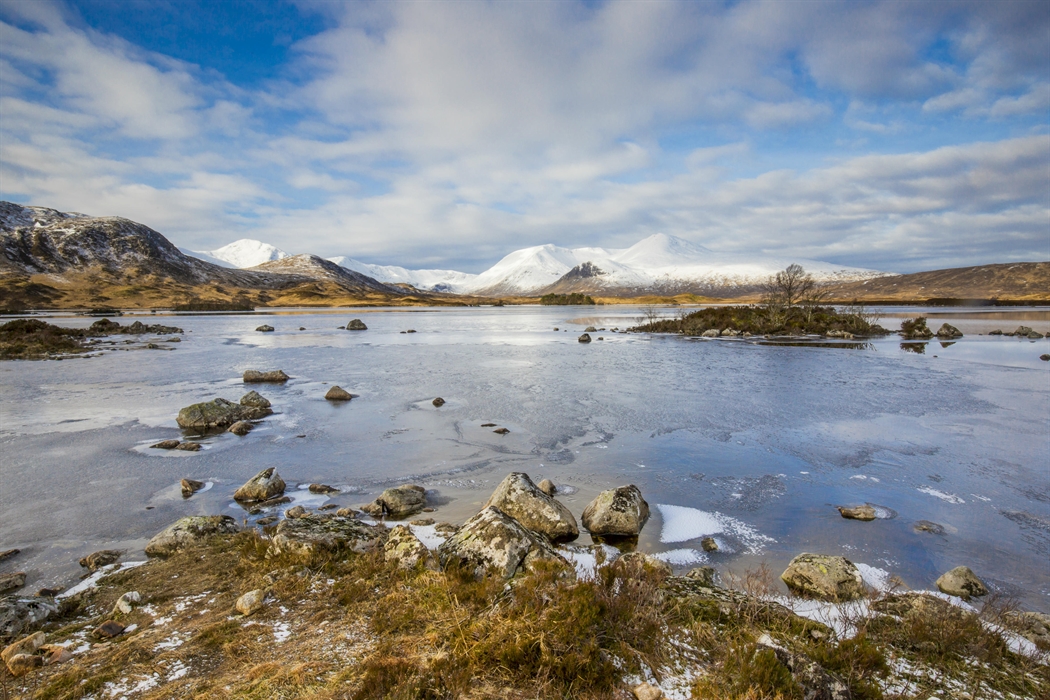
A frozen Lochan na h-Achlaise with a snow-capped Black Mount in the background, Rannoch Moor.
© VisitScotland / Kenny Lam, all rights reserved.
Often referred to as one of the last remaining wildernesses in Europe, Rannoch Moor is a largely uninhabited and uninhabitable boggy moorland that contains the most extensive complex of soligenous mire in Britain.
Occupying roughly 150 square miles in Perthshire, this challenging stretch of land is composed of blanket peat bog, lochans, rivers, heather hillocks and rocky outcrops, all of it more than 1,000 ft (305 m) above sea level. Despite its harsh conditions, the land still supports varieties of flora and fauna, with a wealth of plants, insect, bird and animal life thriving here, ranging from curlews and grouse to roe and red deer.
But perhaps the most striking thing about the moor is its remoteness. The best way to get a feel for this unique area is to take a train journey on the famous West Highland Railway line which crosses the moorland for 23 miles and rises to over 1,300 ft.
Similar places: The Southern Uplands in the south of Scotland, Knoydart Peninsula in North Highlands, Dava Heather Moorland in Moray
- 12
The Old Man of Hoy Orkney
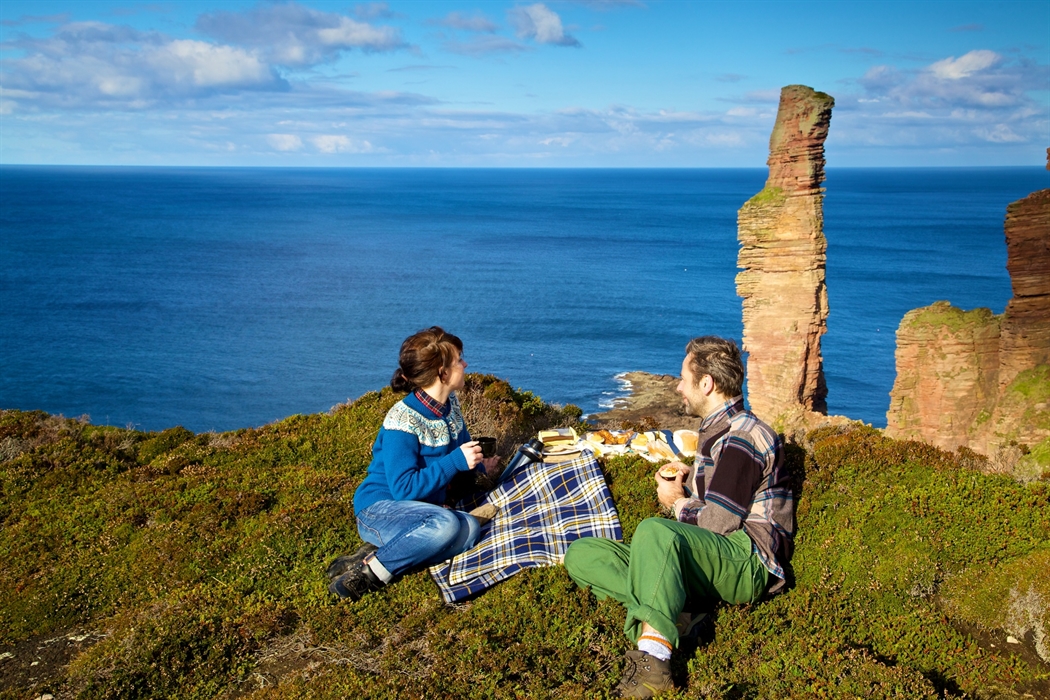
Picnic At The Old Man Of Hoy, Orkney
© VisitScotland / Colin Keldie
The Old Man of Hoy isn’t actually a man at all, or a human being for that matter. Rising out of the Atlantic Ocean to a remarkable height of 449 ft (137 m), the Old Man of Hoy is the UK’s tallest sea stack.
Situated on the island of Hoy, part of the Orkney archipelago in the north of Scotland, this red sandstone monolith has been separated from land by the erosive powers of sea and wind. The formation process usually begins when the sea creates cracks in the headland, causing them to later collapse and form free-standing stacks. The Old Man was originally an arch with two ‘legs’, hence its name.
Climbers from around the world come to scale this famous rock formation. If you would rather admire this spectacular site from a distance, you can walk to it from Moaness by taking the Rackwick Glen walk, and you can also see it from the daily Scrabster to Stromness ferry route.
Similar places: The Old Man of Storr on the Isle of Skye, Duncansby Head near Wick, St Abb’s Head at St Abbs
Find experiences
JavaScript needs to be enabled to see this product search form. You can turn this on in your browser settings.
Other things you might like
Countryside breaks in Scotland
Scotland’s most scenic driving routes

13 Iconic Scottish views
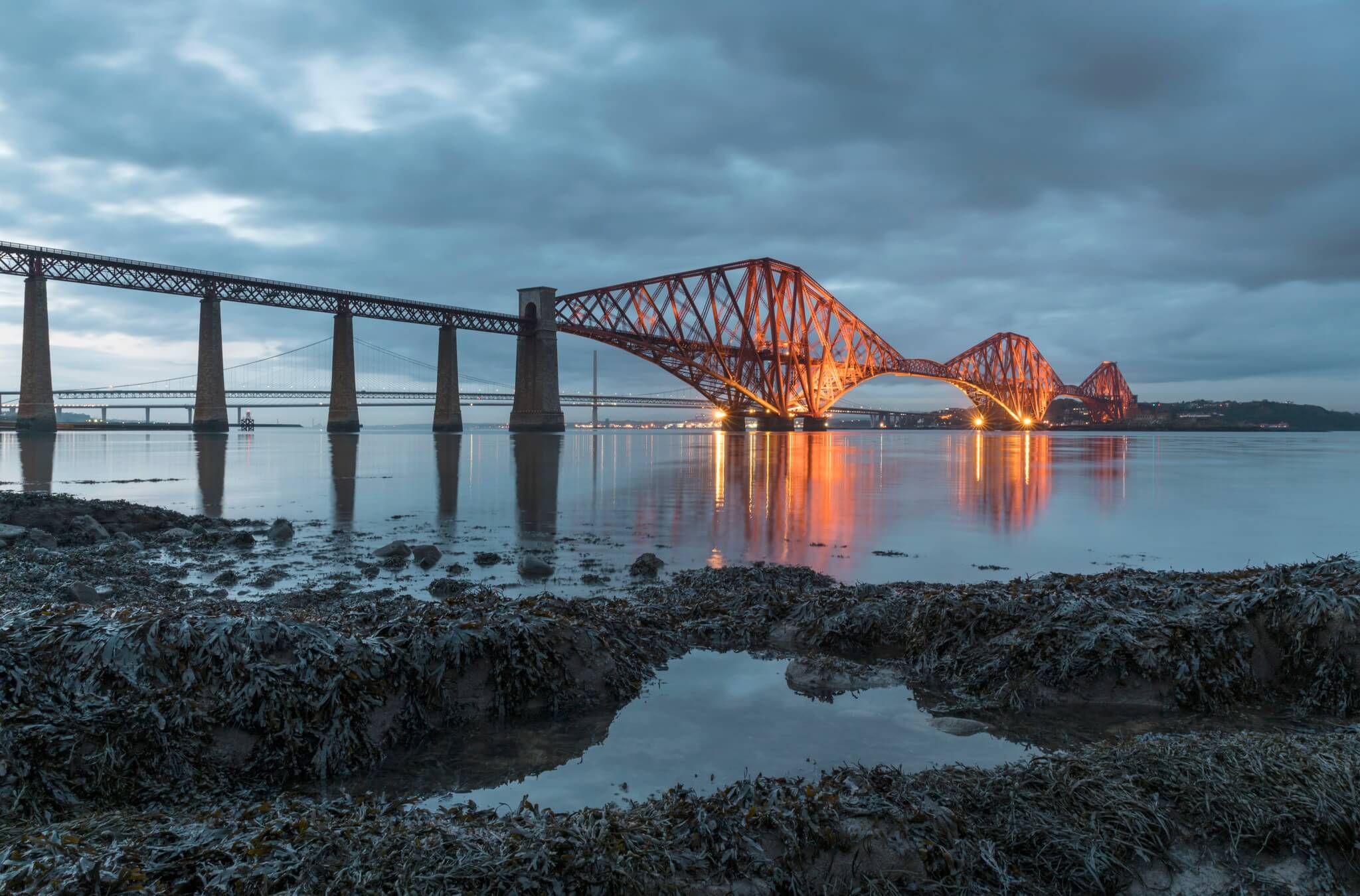
7 Historic wonders in Scotland
Sustainable & responsible tourism in Scotland

7 of the best walks in Scotland
1 of 6
Join our newsletter clan
Get Scotland inspiration direct to your inbox. Don't miss the inside track from our Scotland experts on exciting trip ideas, unique attractions and hidden gems loved by locals.
